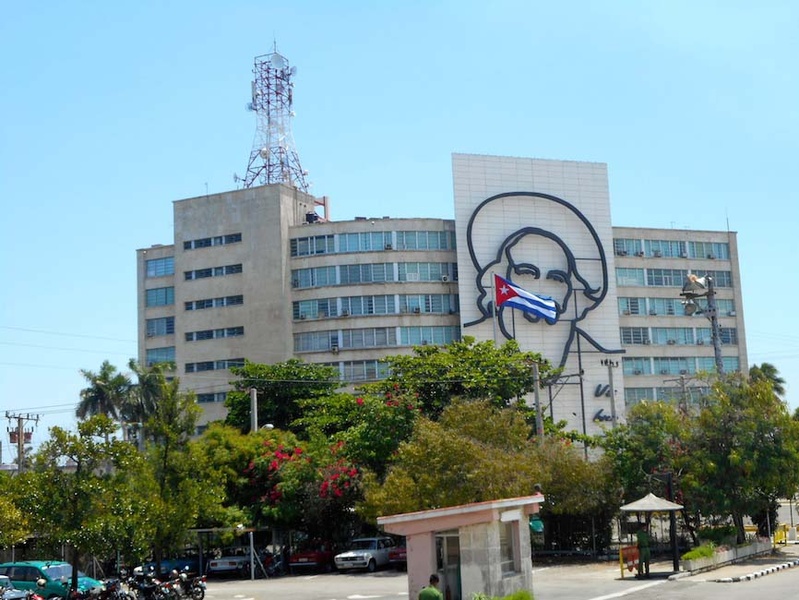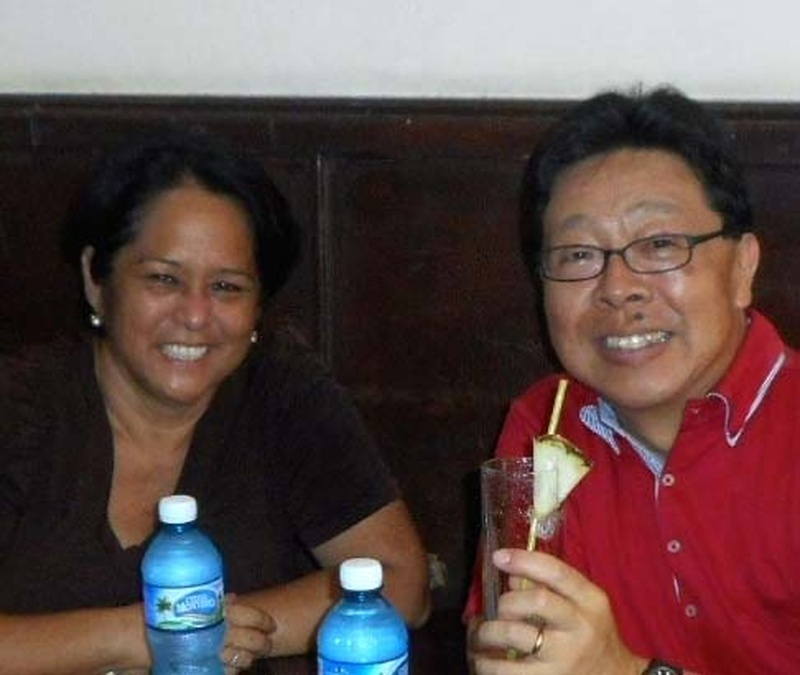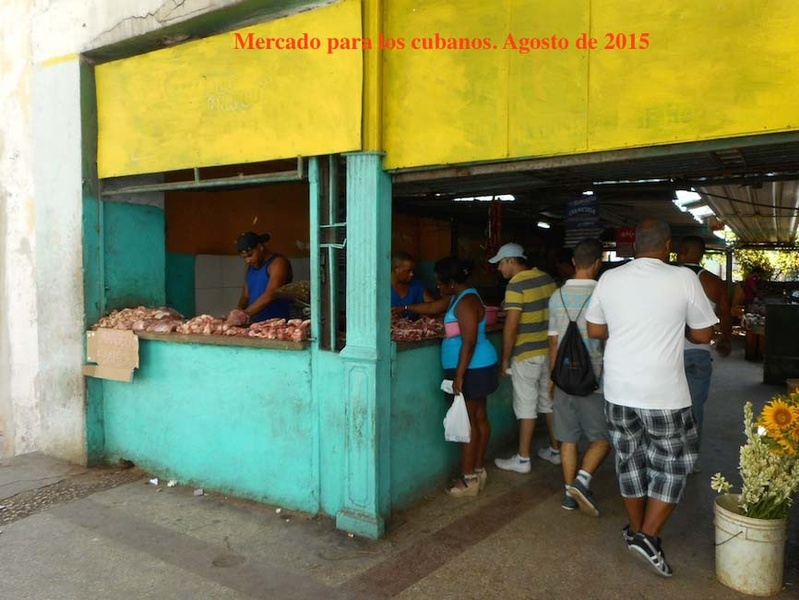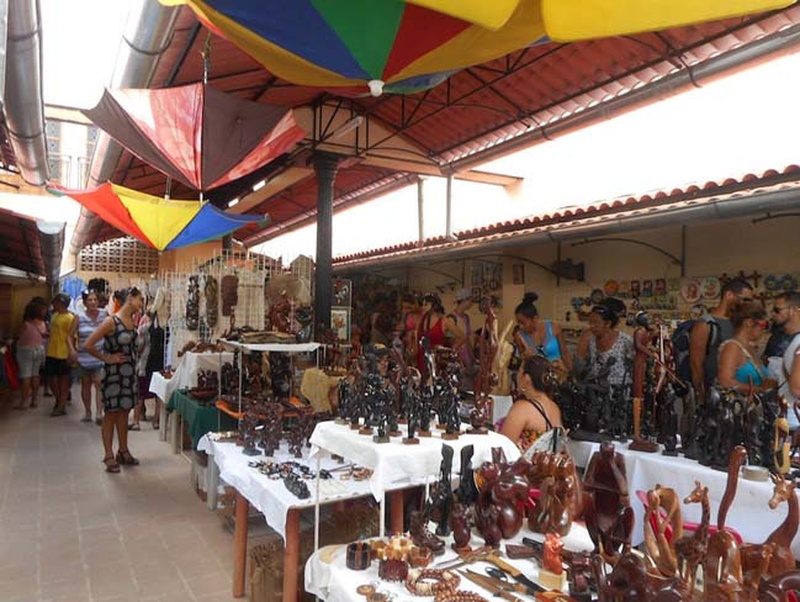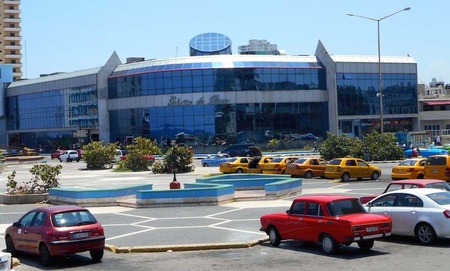This was my first visit to Cuba, a Caribbean country. After participating in the Pan-American Japanese Convention in the Dominican Republic, I arrived in the capital, Havana, via Mexico. There are several direct flights a week from Santo Domingo, but they are quite expensive, so I took a little detour. Thanks to that, I was able to meet Cubans living in Mexico and other countries at Mexico City's international airport, and was able to gather quite a lot of useful information.
The United States has the largest number of Cubans living in the world, with 1.8 million according to the 2010 census (more than 60% of them are in Florida, where Miami is located). It is the third largest Hispanic community in the world, after Mexico with 30 million and Puerto Rican with 4.6 million. Mexico is geographically close and has direct flights, so 20,000 Cubans live there. Cubans who have obtained permanent residency abroad regularly visit their families living in Cuba while doing small business with their home country. Even if they want to bring their relatives over, it is still not so easy for ordinary Cubans to leave the country.
My flight was scheduled for 8:45am at the airport in Mexico, but when I arrived at the counter at around 5am, there were already many Cubans lining up with surprisingly large amounts of luggage. They seemed to be a gathering of wholesalers, with items such as plastic toilet covers, bicycle tubes, motorcycle tires, air conditioners, electrical appliances, tools, bags and shoes (mostly for sale), and I was constantly surprised. They said that there was a serious shortage of goods, so they were taking all sorts of things. Items that could be resold for cash would also be useful for their families back home.
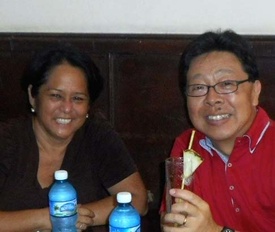
Ms. Francis Arakawa, a former JICA Nikkei trainee, came to pick me up at Havana's Jose Marti International Airport. I met her when I came to Japan for training a few years ago. During my visit to Cuba this time, she was very kind to me, introducing me to other Nikkei people and inviting me to her home. I was also able to hear a lot of stories from her. Currently, Nikkei people in Havana are aiming to strengthen business and cultural relations with Japan, which is expected to expand in the future.
Cuba's Japanese community has one of the longest histories in Latin America, with the first immigrants arriving from Japan in 1898. Most of the immigrants were single men, not families, and many came from Mexico. Unlike other South American countries, agricultural settlements were not formed in a planned manner, but were scattered throughout the country, and in 1914 an agricultural producers' association was established in what was then Constancia (now Cienfuegos province). After that, many Japanese began to gather in the Constancia region and in the less fertile Pinos Island (later Isla de la Juventud, "Island of Youth"). In both of these areas, agricultural cooperatives were organized, and there are records of the first use of chemical fertilizers in Cuba to improve agricultural production.
Ironically, during World War II, many Japanese were detained in this high-security facility on Pinos Island (342 Japanese men, 8 second-generation Japanese men, and 3 Japanese women). Until 1959, when Chairman Castro normalized diplomatic relations with Japan after the revolution, the conditions for Japanese people were extremely tough.
During my stay in Havana, I was able to meet Mr. Francisco Miyasaka1, a leader of the Japanese community, and through him I was also able to talk with several third-generation Japanese. Currently, there are about 1,200 Japanese people in Cuba, of which only one is a first-generation Japanese who emigrated from Japan before the war and lives on Juventud Island. In recent years, many Japanese people have been living in the capital, numbering about 270, and they are busy registering a new organization with the aim of cultural exchange with Japan (Cuba has a rule that only one organization is allowed per foreign community, and they are aiming to establish a new organization centered in Havana in line with the current relaxation measures).
At the recent international trade fair held in Havana (November 2-7, 2015), a "Japan Day" was held jointly by the Embassy of Japan in Cuba and the Mexico office of the Japan External Trade Organization (JETRO), where several Japanese companies exhibited. In May of this year, Foreign Minister Kishida became the first Japanese foreign minister to visit Cuba, and exchanged views with government officials on improving the environment for Japanese companies to enter the country and strengthening economic relations. He is said to have also discussed the provision of medical equipment through grant aid under the Official Development Assistance (ODA) scheme, which is in short supply. In line with this policy, JICA (Japan International Cooperation Agency) is also moving to open a local office.

The normalization of diplomatic relations with the United States for the first time in half a century means new business opportunities, but before that can happen, it is essential that the economic sanctions against Cuba that have been in place since 1962 be lifted. Although foreign capital is welcomed, any mistake in procedures or formal requirements means that permission will not be granted and heavy fines will be imposed, so Americans and Cubans in the United States cannot invest easily.
It is important to remember that Cuba is a socialist country, and all business ventures are subject to lengthy planning and bureaucratic decisions. Foreigners and foreign-affiliated companies cannot buy real estate in Cuba, and can only hire local staff through state-approved agencies. All procedures take an incredibly long time, and the application of detailed regulations is often subject to the excessive and arbitrary discretion and mood of government officials. French and Spanish companies have already expanded into the communications and tourism industries, but there are many similar stories of unreasonableness.
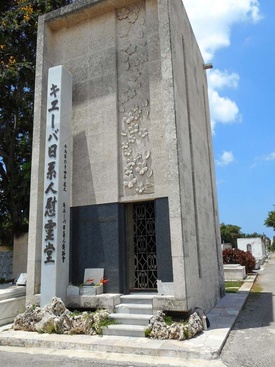
The coffins of many Japanese who emigrated before the war are interred here.
This time, I stayed in Havana for 3 nights and 4 days, but thanks to Francis' kindness, I was able to stroll around the old town, which is a popular tourist destination, and visit the "Japanese Cuba Memorial" in the Havana Municipal Cemetery, where many first-generation Japanese and second-generation Japanese are buried. I had a pleasant dinner at Mr. Arakawa's house. I also chatted with various local people while touring areas that tourists don't often visit alone.
The lives of ordinary citizens are extremely difficult, and they still depend on food rationing. The quality of the food is not very good, and they need cash to buy things at the market. They say that with a monthly take-home pay of 3,000 to 5,000 yen, they are unable to purchase even the most basic necessities. According to the United Nations Economic Commission for Latin America and the Caribbean (ECLAC, known as CEPAL in Spanish), the average per capita income is equivalent to 750,000 yen per year, and the gross domestic product is just under 9 trillion yen, but looking at social life it is hard to believe that this is reflected2 .
The government is also encouraging the expansion of self-employment, and those who own a home and a car can operate private lodging services or taxis. Catering to foreign tourists can bring in a good income, but 75% of that must be paid to the government. It is a licensed business, so anyone who deceives the authorities can get into big trouble. Even so, those who can run such businesses are still fortunate. Vegetables, pork, etc. were sold in the city's market, but hygiene management was not sufficient and there were no refrigerators. It was also pointed out that even if there were refrigerators, the frequent power outages made it difficult to store the food properly.

I stopped by the hospital and talked to some middle-aged women in the waiting room in Argentine-accented Spanish. They complained about the long wait times and the lack of testing equipment and supplies. They said that Cuba has one of the highest standards of medical care in the world, but that's only possible because of the privileged classes and wealthy foreigners who pay in dollars (the people selling food outside the hospital seemed to know everything).
After further investigation, I found that although the quality of Cuban doctors is not that bad, many of them are sent overseas by the government to earn foreign currency, with 50,000 to 60,000 working in Venezuela, Brazil, Costa Rica, Argentina, Portugal, etc. The government charges more than $4,000 per person per month, but doctors' take-home pay is said to be around $1,200 (when in Cuba, they were earning $50 a month and an annual salary of 70,000 yen, so a monthly salary of 150,000 yen is a high amount and very attractive). Sometimes these doctors defect, choosing not to return to Cuba. For Cuba, the dispatch of doctors brings in foreign currency equivalent to 800 billion yen per year, a figure that is significantly higher than the 120 billion yen (1 billion dollars) remitted by compatriots overseas.
Based on the ideal of a "nation where everyone is equal," households that receive remittances from the United States, Mexico, etc. have a relatively comfortable standard of living, and the gap between them and those who do not is widening. For those who can afford to buy things, the future expansion of imports means a richer and more convenient life, but there are also concerns that social discontent will grow.
Currently, there are around 3 million tourists, but this number is sure to increase in the future. Luxury hotels that cost 20,000 to 30,000 yen per night are always fully booked, and there is a shortage of accommodation. For this reason, investment in the tourism industry is urgently needed. Development of agricultural production and the processed food industry is also a priority, but the concepts of labor productivity and technological innovation are still unfamiliar to many Cubans. Cuba's specialty products, cigars, rum (a distilled liquor brewed from sugar cane, which is the base of mojitos), lobster, nickel, and sugar alone cannot make ordinary Cubans richer.
Even with a high level of education and a high average life expectancy (80 years), surviving in a globalized world economy requires an unprecedented level of effort and change in mindset. Institutionally, government officials have stated that they would like to aim for future reforms by adopting an economic liberalization and political system similar to that of Vietnam, but there are fundamental differences between Vietnamese and Cubans in terms of their work attitudes and the size of their domestic markets.3
The internet environment is expected to improve considerably in the future. No matter how much the government strengthens its surveillance system and only opens up the economy to a limited extent, new information and possibilities will surely stimulate the people. As expectations rise, so will the demands on the authorities.
Japanese people living in Havana are also excited about the role of the university as a bridge between Japan and Havana. There is no doubt that there will be more opportunities for them to study or train in Japan in the future. A big challenge is how to utilize the knowledge and experience they have gained here to help Cuba, where there are many things that are lacking.
Notes:
1. Interview published in Decabber Nikkei, “ Francisco Miyasaka On Being a Cuban Nisei ” [3 parts, English only] (October 2013).
After the war, when Castro came to power, Miyasaka joined the Cuban Ministry of International Trade and Industry, and served as commercial attaché at the Cuban Embassy in Tokyo from 1961 to 1964. He is currently a local executive at the Japanese trading company Sojitz.
2. I'm not sure if this is a reliable statistic, but this figure is equivalent to the per capita income of Peru, which has a strong economy. If you include government subsidies for food, housing, education, and medical care, it may represent roughly the same standard of living, but in terms of figures, it is equivalent to the per capita income of Peru.
3. Vietnam's population is nine times that of Cuba, exceeding 90 million people. Its GDP is equivalent to about 20 trillion yen, and its average income per capita is 250,000 yen, less than one-third that of Cuba. However, when it comes to market size and purchasing power, Vietnam's vitality is several times greater.
Reference: Overview of Vietnam (JETRO)
© 2016 Alberto J. Matsumoto


